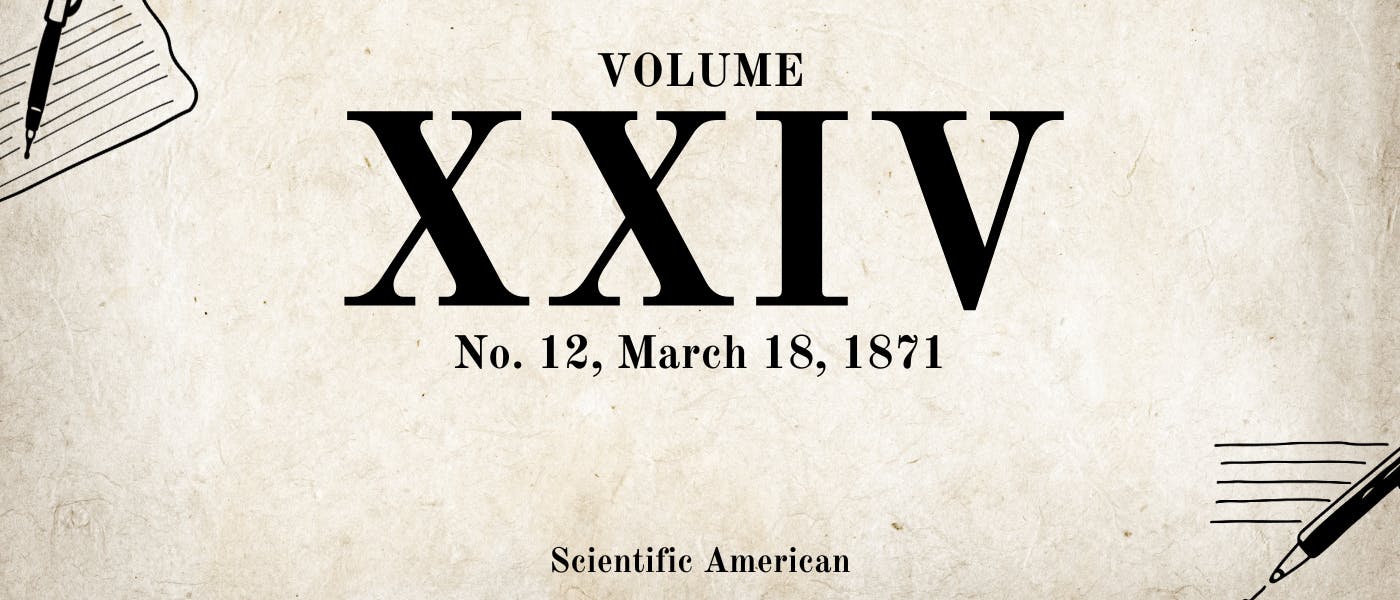Scientific American, Volume XXIV., No. 12, March 18, 1871 by Various, is part of the HackerNoon Books Series. You can jump to any chapter in this book here. THE MINERAL RESOURCES OF MISSOURI.
THE MINERAL RESOURCES OF MISSOURI.
The incalculable wealth, which lies hid in the bosom of Mother Earth, in our vast possessions of the West, is undoubtedly centered in the State of Missouri; and the development of this fund of riches must add to the national prosperity, not only by its immeasurable intrinsic value, but by its affording occupation to armies of laborers, the latter being the highest and most important consideration.
In 1852-3, a geological survey of the State was wisely decided upon, and a liberal provision for its execution made. Two valuable reports, by Professor Swallow, have been printed, in the year 1855, but the notes of his subsequent investigations have not been made public.
In the session of 1869-70, further action, in this important public work, was taken by the State legislature, and arrangements made for a still more accurate and detailed examination, under the direction of Professor A. D. Hager, of Vermont.
The distribution of metals all over the State will be seen in the following figures, taken from the St. Louis Journal of Commerce, which show the number of counties in which the various ores are found: Iron in 46 counties, lead in 43, coal in 36, copper in 24, marble in 11, zinc in 27, fire clay in 16, barytes in 10, nickel in 6, granite in 4, tin in 4, plumbago in 2, gypsum in 2, alum in 1, antimony in 4.
There is probably no country in the world so endowed as this. Of iron alone, according to the State geologist's report for 1855, there is ore of the best quality, sufficient to furnish 200,000,000 tuns of iron; and this quantity lies in a small space, in the vicinity of Pilot Knob and Iron Mountain, and within 100 miles of St. Louis.
The quality of the iron is highly spoken of by the manufacturers, and the capacity of the smelting appliances has reached to over 150,000 tuns per annum. The coal is well suited for reduction of ores, either by hot or cold blast treatment. The Scotia Iron Co. commenced operations in January, 1870; and, although the materials for building blast furnaces had to be carried 80 miles into a desert, the first furnace was blown into blast in August, 1870. This furnace will run about 24 tuns per day. The company procures ore from a hill, near the furnace, in which there is an apparently inexhaustible supply of red oxide and brown specular. This ore yields 60 per cent of pure metal. The erection of mills for making wrought iron is contemplated, and the high quality and prodigious quantity of the raw material will justify and reward any outlay of capital in this direction.
The shipment of ore to other States goes on constantly, the last year's account showing that 246,555 tuns were dispersed over Indiana, Ohio, and others. The furnaces at Kingsland, South St. Louis, Lewis Iron Co.'s Works, Carondelet, and Maramec are all well situated as to coal and limestone, the Maramec Works having a most valuable water-power. These latter works also ship about 40,000 tuns red hematite ore yearly.
About HackerNoon Book Series: We bring you the most important technical, scientific, and insightful public domain books.
This book is part of the public domain. Various (2006). Scientific American, Volume XXIV., No. 12, March 18, 1871. Urbana, Illinois: Project Gutenberg. Retrieved https://www.gutenberg.org/cache/epub/19180/pg19180-images.html
This eBook is for the use of anyone anywhere at no cost and with almost no restrictions whatsoever. You may copy it, give it away or re-use it under the terms of the Project Gutenberg License included with this eBook or online at www.gutenberg.org, located at https://www.gutenberg.org/policy/license.html.

